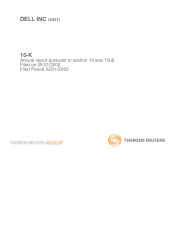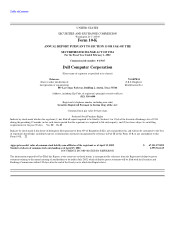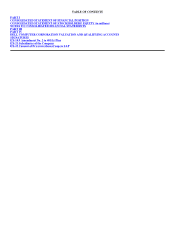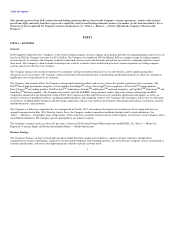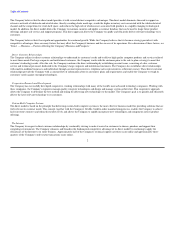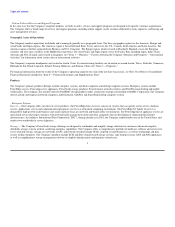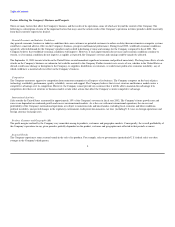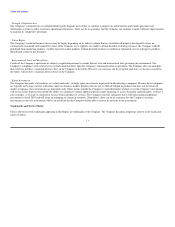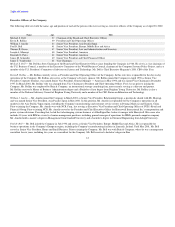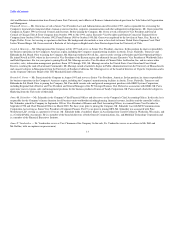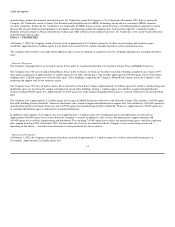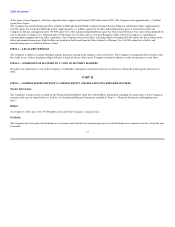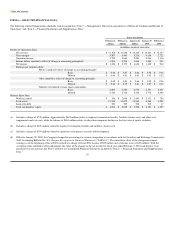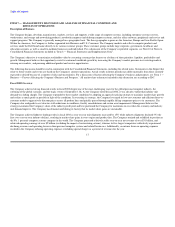Dell 2001 Annual Report Download - page 10
Download and view the complete annual report
Please find page 10 of the 2001 Dell annual report below. You can navigate through the pages in the report by either clicking on the pages listed below, or by using the keyword search tool below to find specific information within the annual report.
Table of Contents
Product Development
The Company's product development efforts are focused on designing and developing competitively priced computer systems that adhere to industry
standards and incorporate the technologies and features that the Company believes are most desired by its customers. To accomplish this objective, the
Company must evaluate, obtain and incorporate new hardware, software, storage, communications and peripherals technologies that are primarily developed
by others. The Company's product development team includes programmers, technical project managers and engineers experienced in system architecture,
logic board design, sub-system development, mechanical engineering, manufacturing processing and operating systems. This cross-functional approach to
product design has enabled the Company to develop systems with improved functionality, manufacturability, reliability, serviceability and performance, while
keeping costs competitive. The Company takes steps to ensure that new products are compatible with industry standards and that they meet cost objectives
based on competitive pricing targets.
The Company bases its product development efforts on cooperative, meaningful relationships with the world's most advanced technology companies. These
working partnerships allow the Company to use its direct model and build-to-order manufacturing process to deliver, on a timely and cost-effective basis,
those emerging technologies that are most relevant to its customers.
During fiscal year 2002, the Company incurred $452 million in research, development and engineering expenses, compared with $482 million for fiscal year
2001 and $374 million for fiscal year 2000 (excluding $194 million of acquired in-process research and development). The amount the Company spends on
research, development and engineering activities, which the Company believes to be important to its continued success and growth, is determined as part of
the annual budget process and is based on cost-benefit analyses and revenue forecasts. The Company prioritizes activities to focus on projects that it believes
will have the greatest market acceptance and achieve the highest return on the Company's investment.
Patents, Trademarks and Licenses
The Company holds a portfolio of approximately 730 U.S. patents and approximately 535 U.S. patent applications pending, and has a number of related
foreign patents and patent applications pending. The Company's U.S. patents expire in years 2003 through 2020. The inventions claimed in those patents and
patent applications cover aspects of the Company's current and possible future computer system products, manufacturing processes and related technologies.
The Company is developing a portfolio of patents that it anticipates will be of value in negotiating intellectual property rights with others in the industry.
The Company has obtained U.S. federal trademark registration for its DELL word mark and its Dell logo mark. The Company owns registrations for 42 of its
other marks in the U.S. As of February 8, 2002, the Company had pending applications for registration of 50 other trademarks. The DELL word mark, Dell
logo and other trademark and service mark registrations in the U.S. may be renewed as long as the mark continues to be used in interstate commerce. The
Company believes that establishment of the DELL mark and logo in the U.S. is material to the Company's operations. The Company has also applied for or
obtained registration of the DELL mark and several other marks in approximately 176 other countries or jurisdictions where the Company conducts or
anticipates expanding its international business. The Company has also registered approximately 1000 global domain names. In addition, the Company has
registered approximately 400 country-specific domain names. The Company has also taken steps to reserve corporate names and to form non-operating
subsidiaries in certain foreign countries where the Company anticipates expanding its international business.
The Company has entered into a variety of intellectual property licensing and cross-licensing agreements. In addition, the Company has entered into
nonexclusive licensing agreements with
7

